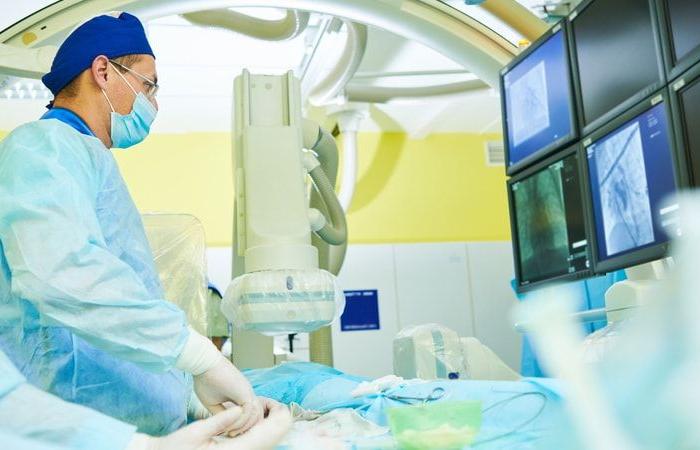Total chronic coronary occlusions interest around 25 to 33 % of patients who benefit from coronarography. Although it is shown that the PCI (percutaneous interventional procedure) improves the quality of life of these patients compared to optimal medical treatment alone, less than 10 to 20 % of them are treated by PCI, due to the complexity of the procedure and the high associated risk of heart failure and major complications.
Intravascular imaging (IVI) can improve the PCI procedure for total chronic coronary occlusions because it improves the expansion of the stents and their implementation, thus ensuring wider blood light. However, in patients with a total chronic coronary occlusion, there are few data comparing the PCI guided by intravascular imaging to PCI guided by angiographic data alone.
It was this uncertainty that pushed Gomes and Coll. to carry out a systematic review and a meta-analysis of the controlled and randomized trials which compared, in patients with an occlusion, total chronic coronary, the PCI guided by intravascular imaging to the PCI guided by the only angiographic data.
The main evaluation criterion was the impact of major cardiac events (MACE), namely an impact of a composite criterion associating death of any cause, cardiac deaths, myocardial infarction (IDM), revascularization of a target artery. The secondary evaluation criteria were each of the components of the composite criterion taken in isolation. A pre-special analysis focused on the use of intravascular ultrasound and optical consistency tomography.
An improvement in the clinical prognosis
-Thus, 1,296 patients were analyzed, 713 of which (55 %) had benefited from a PCI guided by intravascular imagery. With a follow -up of 1 to 3 years, the impact of the MACE was significantly lower when the PCI had been guided by intravascular imaging (7.2 % versus 13 % ; RR 0,55 ; IC 95 % : 0,35–0,88 ; p=0,012).
The analysis of the secondary criteria has shown a lower impact of the revascularizations of the target vessel in the group of patients in whom intravascular imaging had guided the PCI (3.1 % vs 6.7 %; RR 0.52; 95 % CI: 0.29–0.97; p = 0.038). There was no significant difference in terms of IDMs, deaths of any cause and cardiac deaths.
In the patient’s subgroup in whom an intravascular ultrasound had guided PCI the incidence of the MACE was also significantly lower (8.4 % vs 14,3 % ; RR 0,59 ; IC 95 % : 0,37–0,91 ; p=0,019).
In conclusion, in treatment of total chronic coronary occlusions, compared to the PCI guided by angiography, the PCI guided by intravascular imagery is associated with an improvement in the clinical prognosis.








